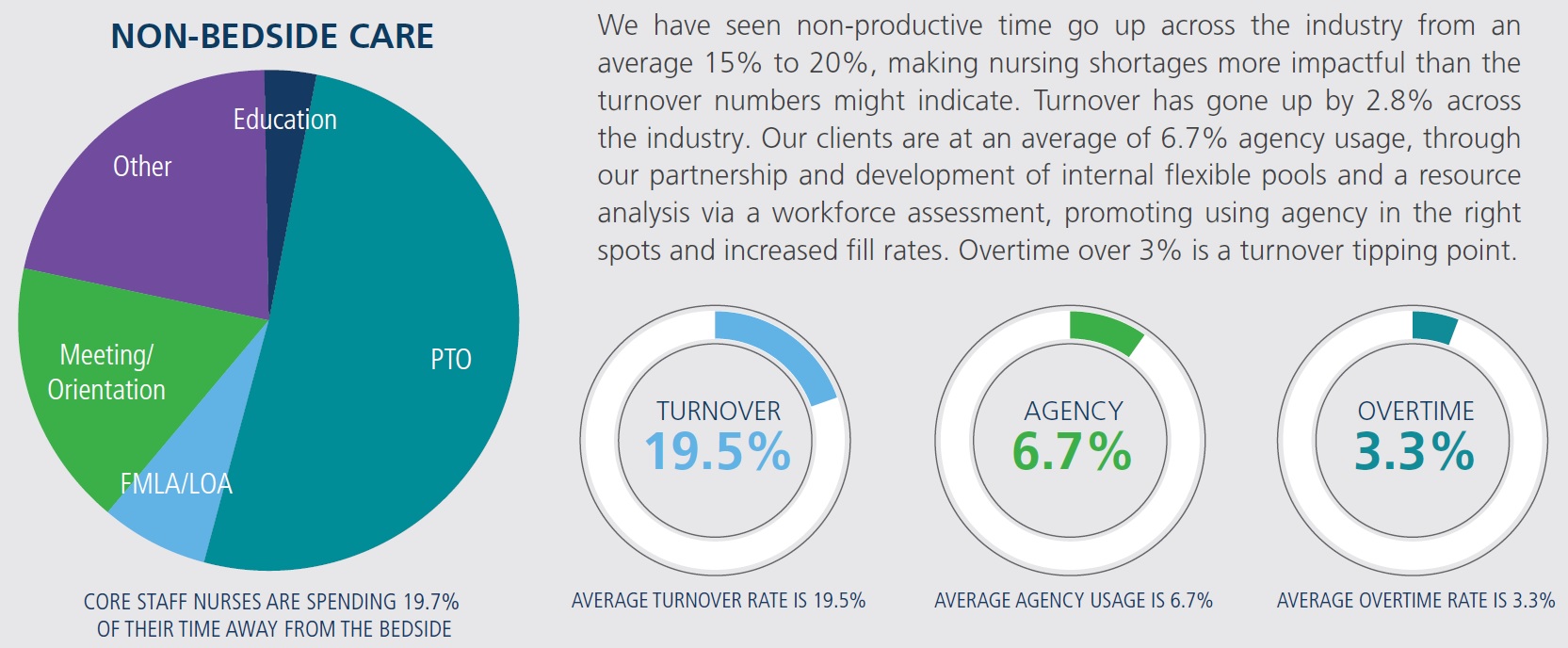How Hospitals Can Reduce an Overreliance on Contingent Nursing Labor
The landscape has drastically changed when it comes to nurse staffing for hospitals, and the COVID-19 pandemic has prompted a surge in the use of travel nurses. While contingent labor has been critical in helping organizations manage through the pandemic, helping them supplement core staffing to provide safe, quality care, it has not been without its challenges. With demand at an all-time high, the attrition of many full-time employees, and limited contingent resources, pay rates for travel nurses have increased significantly. To put it simply, demand is exceeding the supply of nurses, and relying solely on travel nursing is not an adequate strategy to address the rising levels of vacancies.
This shortage is contributing to the continued issue of nurse burnout and turnover, and it’s clear that hospitals need to turn to workforce technology solutions and advanced workforce strategies to help optimize their limited talent resources and combat the cycle of limited supply and rising cost of labor.
This article will examine the current nursing landscape, the consequences of relying too heavily on a single source of contingent labor, and how workforce analytics can unlock a more sustainable solution for hospitals.
The Nurse Staffing Landscape
The long tail of the COVID-19 pandemic is further exacerbating nurse burnout and retention issues for healthcare organizations. Our recent AMN Healthcare 2021 RN Survey illuminated nurses’ current stay/leave intentions. Though two-thirds expect to remain with their employer, a striking 20% responded they are “extremely” or “somewhat” likely to depart within the next year. An American Nurses Foundation survey put the number at 18% over the coming six months.1 Another looming retention threat is suggested by the 23% of AMN survey respondents who said they are likely to leave the profession altogether because of the COVID-19 experience.
Additional recent data shows that the average salary for registered nurses grew four percent in the first nine months of 2021 and that nurse turnover rates have increased 22% this year.

Why Contingent Labor Should Be One of Many Solutions
This data highlights the predicament that hospitals find themselves in, with limited and dwindling resources and a huge demand for nursing services. With urgent patient care service demand and many staffing gaps to fill, organizations naturally turned to travel nurses to fill these needs. As competition escalated due to supply issues, pay rates for nurses and other professionals naturally rose, ultimately straining already tight budgets.
Travel nurses are critical to the healthcare ecosystem and have played an even more integral role in the past 20 months, but an overreliance on any single contingent labor source does not set organizations up for long-term success. Best-in-class healthcare organizations are leveraging workforce analytics to optimize staffing resources, minimize the reliance on travel nurses, and establish the right layers of contingent, core and internal float staff.
Workforce Analytics: Unlock A Sustainable Solution
The nursing labor market has changed, and organizations must employ sustainable, long-term talent strategies that leverage many types of staffing sources. Organizations need to utilize data, analytics and the proper workforces strategies to ensure that they are maximizing resources and can accurately predict fluctuations in supply and demand, then have the flexibility in place to adjust sustainably for upcoming shifts. The right intelligence tools can ensure that hospitals and health systems have the right visibility into their workforce and can proactively control costs without sacrificing quality. The optimal approach should include:
- A Workforce Analysis to review current staffing levels, volumes, and workload indicators to optimize staff layering and sizing as well as float pool targets across the enterprise and on a unit-by-unit basis.
- Predictive Analytics and long-term forecasting (120 days in advance of a shift) to allow organizations to strategically manage needs ahead and optimize staffing resources well in advance.
- Open Shift Management to allow hospitals to cost-effectively fill up to 75% of open shift hours more than two weeks ahead of the shift.
- An Enterprise Staffing View to support transparency across the organization and a centrally coordinated resource management approach that promotes flexibility and agility to respond to changing demand.
- Integrated Technology that will seamlessly work with existing HR, Time, Payroll and EMR systems.
The right intelligence will allow healthcare organizations to uncover the opportunities most critical to purposefully structuring then optimizing their workforce, resulting in cost-effective, sustainable resource management.
Learn more about how the scheduling technology, staff planning solutions, analytics, and expertise only available from AMN Healthcare can help organizations establish the right talent management strategy for their specific challenges and strengths.
Visit https://www.amnhealthcare.com/technology/workforce/scheduling/ or call 888.338.6148.
1. American Nurses Foundation, Pulse on the Nation’s Nurses COVID-19 Survey Series: Year One COVID-19 Impact Assessment, February 2021.

